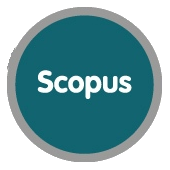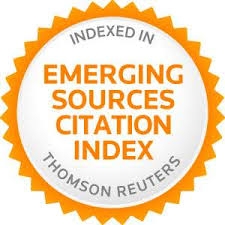Impacto de la Sociedad del Conocimiento en la universidad y en la comunicación científica
Resumen
Palabras clave
Referencias
Aliaga, F. M. (2014). Twenty years of electronic publishing and open access: a pioneer reaches maturity. RELIEVE, 20(1), art. : DOI: 10.7203/relieve.20.1.3856
Ally, M., & Prieto-Blázquez, J. (2014, January 15). What is the future of mobile learning in education? RUSC. Universities and Knowledge Society Journal, 11(1), 142-151. DOI: 10.7238/rusc.v11i1.2033
Alvarez, I., Espasa, A., & Guasch, T. (2012). The value of feedback in improving collaborative writing assignments in an online learning environment. Studies in Higher Education, 37(4), 387–400. DOI:10.1080/03075079.2010.510182
Anderson, J., Boyles, J., & Rainie, L. (2012). Higher Education: Experts Expect More Efficient Collaborative Environments and New Grading Schemes; They Worry about Massive Online Courses, the Shift Away. Retrieved from ERIC database (ED534048)
Anglada, L. (2014). De qué hablamos cuando hablamos de políticas de información. El Profesional de la Informacion, 23(2), 105-112. DOI: 10.3145/epi.2014.mar.01
Alperín, J. P. B., D.; Fischman, G. (2014). Open Access indicators and scholarly communications in Latin America. Ciudad Autónoma de Buenos Aires: UNESCO.
Bates, A. W. T., & Sangra, A. (2011). Managing Technology in Higher Education: Strategies for Transforming Teaching and Learning. San Francisco: Willey.
Bengoetxea, E. (2012). Higher Education Governance Reform in Practice. Matching Institutional Implementation Practices and Policies. RUSC. Universities and Knowledge Society Journal, 9(29), 86-99. DOI: 10.7238/rusc.v9i2.1415
Boulton, P. G. (2014). The open data imperative. Insights, 27(2), 133-138. DOI: 10.1629/2048-7754.148
Brown, M. (2014). Is Almetrics an Acceptable Replacement for Citation Counts and the Impact Factor?. Serials Librarian, 67(1), 27-30. DOI: 10.1080/0361526X.2014.915609
Cabero, J. (2006). Pedagogical bases of e-learning. RUSC. Universities and Knowledge Society Journal, 3(1). DOI:10.7238/rusc.v3i1.265
Capshaw, N. C. (2012). How the Internet Affects Higher Education: A Multi-Country Analysis. UK: AV Akademikerverlag
Carnoy, M., Rabling, B. J., Castano-Munoz, J., Duart, J. M., & Sancho-Vinuesa, T. (2011). Who attends and completes virtual universities: the case of the Open University of Catalonia (UOC). Higher Education, 63, 53–82. DOI:10.1007/s10734-011-9424-0
Castaño-Muñoz, J. (2010, January 13). Digital Inequality Among University Students in Developed Countries and its Relation to Academic Performance. RUSC. Universities and Knowledge Society Journal, 7(1), 43-52 . DOI: 10.7238/rusc.v7i1.661
Castells, M. (2001). The Internet Galaxy: Reflections on the Internet, Business, and Society. New York: Oxford University Press. DOI: 10.1007/978-3-322-89613-1
Caswell, T., Henson, S., Jensen, M., & Wiley, D. (2008, February 7). Open Content and Open Educational Resources: Enabling universal education. The International Review of Research in Open and Distance Learning, 9(1), 1-11
Cobo, C., & Moravec, J. W. (2011). Aprendizaje invisible. Hacia una nueva ecología de la educación. Barcelona: UBe - Universitat de Barcelona.
Connaway, L. S. (2014). ¿Cuál es el sentido de las bibliotecas? Un llamamiento para una evaluación centrada en el uso. BiD: textos universitaris de biblioteconomia i documentació, 32. Retrieved from: http://bid.ub.edu/es/32/connaway2.htm#sthash.AkG1fivN.dpuf
Craig, I. D., Plume, A. M., McVeigh, M. E., Pringle, J., & Amin, M. (2007). Do open access articles have greater citation impact?: A critical review of the literature. Journal of Informetrics, 1(3), 239-248. DOI: 10.1016/j.joi.2007.04.001
Crisp, G. T. (2012). Integrative assessment: reframing assessment practice for current and future learning. Assessment & Evaluation in Higher Education, 37(1), 33–43. DOI:10.1080/02602938.2010.494234
Daniel, J., Kanwar, A., & Uvalić-Trumbić, S. (2009). Breaking Higher Education’s Iron Triangle: Access, Cost, and Quality. Change: The Magazine of Higher Learning, 41(2), 30–35. DOI:10.3200/CHNG.41.2.30-35
De Pablos, J. (2010). Higher Education and the Knowledge Society. Information and Digital Competencies. RUSC. Universities And Knowledge Society Journal, 7(2), 6-15. DOI: 10.7238/rusc.v7i2.977
Downes, S. (2001, July 1). Learning Objects: Resources For Distance Education Worldwide. The International Review of Research in Open and Distance Learning, 2(1). Retrieved from: http://www.irrodl.org/index.php/irrodl/article/view/32/378
Duart, J. M. & Repáraz, C. (2011). Enseñar y aprender con las TIC. Estudios Sobre Educacion, 20, 9-19
Finch, J. (2012). Accessibility, sustainability, excellence: how to expand access to research publications. Report of the Working Group on Expanding Access to Published Research. Findings, 2012.
Gimenez Toledo, E. (2014). Imbalance in scientific publishing. Revista de Investigacion Educativa, 32(1), 13-23. DOI: 10.6018/rie.32.1.190251
Guo, F., Xue, J. Y., & Li, R. X. (2014). Open access in China: A study of social science journals. Journal of Scholarly Publishing, 45(4), 336-352. DOI: 10.3138/jsp.45.4.02
Guri-Rosenblit, S. (2009). Digital Technologies in Higher Education. New York: Nova Science Publishers.
Hoffmann, C. P., Lutz, C., & Meckel, M. (2014). Impact factor 2.0: Applying social network analysis to scientific impact assessment. Proceedings of the Annual Hawaii International Conference on System Sciences, 1576-1585.
Jong, S., & Slavova, K. (2014). When publications lead to products: The open science conundrum in new product development. Research Policy, 43(4), 645-654. DOI: 10.1016/j.respol.2013.12.009
Keita, B. (2012). Altmetrics: alternative ways of measuring scholarly impact based on the social web. Journal of Information Processing and Management, 55(9), 638-646. DOI: 10.1241/johokanri.55.638
Konkiel, S., Piwowar, H., & Priem, J. (2014). The imperative for open altmetrics. Journal of Electronic Publishing, 17(3). DOI:10.3998/3336451.0017.301
Light, R. P., Polley, D. E., & Borner, K. (2014). Open data and open code for big science of science studies. Scientometrics, 101(2), 1535-1551. DOI: 10.1007/s11192-014-1238-2
Martin, F. G. (2012). Will massive open online courses change how we teach? Communications of the ACM, 55(8), 26. DOI:10.1145/2240236.2240246
McCabe, M. J., & Snyder, C. M. (2014). Identifying the effect of Open Access on citations using a panel of science journals. Economic Inquiry, 52(4), 1284-1300. DOI: 10.1111/ecin.12064
McCaffery, P. (2010). The Higher Education Manager’s Handbook: Effective Leadership and Management in Universities and Colleges. New York: Routledge
Mehraban, S., & Mansourian, Y. (2014). Tracing scientific trends: Scientometrics methods and metrics, and the change in librarians' roles. Iranian Journal of Information Processing Management, 29(3), 613-631.
Mengua-Andrés, S. (2013). Rethinking the role of Higher Education. Journal of New Approaches in Educational Research, 2(1), 1-2. DOI: 10.7821/naer.2.1.1-2
Moravec, J. W. (2013). Knowmad society: the “new” work and education. On the Horizon, 21(2), 79-83. DOI: 10.1108/10748121311322978
Mounce, R. (2013). Open Access and Altmetrics: Distinct but Complementary. Bulletin of the American Society for Information Science and Technology, 39(4), 26-29. DOI: 10.1002/bult.2013.1720390406
NMC. (2014). NMC Horizon Report > 2014 Higher Education Edition | The New Media Consortium. Retrieved November 12, 2014, from http://www.nmc.org/publications/2014-horizon-report-higher-ed
Osorio Gómez, L. A., & Duart, J. M. (2011a). A hybrid approach to university subject learning activities. British Journal of Educational Technology, 43(2), 259–271. DOI:10.1111/j.1467-8535.2011.01175.x
Osorio Gómez, L. A., & Duart, J. M. (2011b). Interaction Analysis in Hybrid Learning Environment. Comunicar, 19(37), 65–72. DOI:10.3916/C37-2011-02-06
Parker, B., & Burnie, D. (2009). Classroom Technology in Business Schools. AACE Journal, 17(1), 45-60.
Pedró, F. (2006). The New Millennium Learners: Challenging our Views on ICT and Learning. IDB Publications (Working Papers). Retrieved from http://ideas.repec.org/p/idb/brikps/9228.html
Pittinsky, M. (2006). La universidad conectada. Perspectivas del impacto de internet en la educación superior. Málaga: Aljibe.
Piwowar, H., & Priem, J. (2013). The Power of Altmetrics on a CV. Bulletin of the American Society for Information Science and Technology, 39(4), 10-13. DOI: 10.1002/bult.2013.1720390405
Roig, R., Mengual-Andrés, S., & Guerrero, C. S. (2014). Assessment the pedagogical quality of the MOOC. Profesorado, 18(1), 27-41.
Salager-Meyer, F. (2008). Scientific publishing in developing countries: Challenges for the future. Journal of English for Academic Purposes, 7(2), 121-132. DOI: 10.1016/j.jeap.2008.03.009
Sangrà, A. (2002, January 1). A New Learning Model for the Information and Knowledge Society: The Case of the Universitat Oberta de Catalunya (UOC), Spain. The International Review of Research in Open and Distance Learning, 2(2). Retrieved from http://www.irrodl.org/index.php/irrodl/article/view/55/114
Schekman, R., Watt, F. M., & Weigel, D. (2013). A year in the life of eLife. eLife, 2013(2), eLife 2013;2012:e01516. DOI: 10.7554/eLife.01516
Schekman, R., Watt, F. M., & Weigel, D. (2013). eLife and early career researchers. eLife, 2013(2), eLife 2013;2012:e01633. DOI: 10.7554/eLife.01633
Thelwall, M., Haustein, S., Lariviere, V., & Sugimoto, C. R. (2013). Do Altmetrics Work? Twitter and Ten Other Social Web Services. Plos One, 8(5), 7. DOI: 10.1371/journal.pone.0064841
Thomson Reuters. (2014). The Research and Innovation Performance of the G20.
Toffler, A. (1985). The Adaptive Corporation. New York: McGraw Hill.
Torres, D., Cabezas, A., & Jimenez, E. (2013). Altmetrics: New Indicators for Scientific Communication in Web 2.0. Comunicar(41), 53-60. DOI: 10.3916/c41-2013-05
Walsh, J. P., & Huang, H. (2014). Local context, academic entrepreneurship and open science: Publication secrecy and commercial activity among Japanese and US scientists. Research Policy, 43(2), 245-260. DOI: 10.1016/j.respol.2013.10.003
Weller, M. (2012). Digital Scholarship and the Tenure Process as an Indicator of Change in Universities. RUSC. Universities and Knowledge Society Journal, 9(2), 167-182, DOI: 10.7238/rusc.v9i2.1398
Enlaces refback
- No hay ningún enlace refback.


